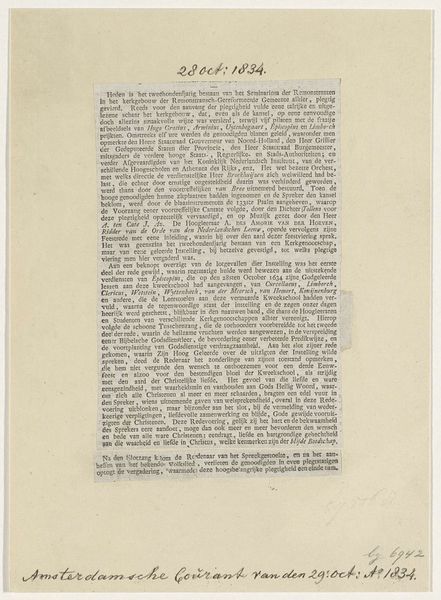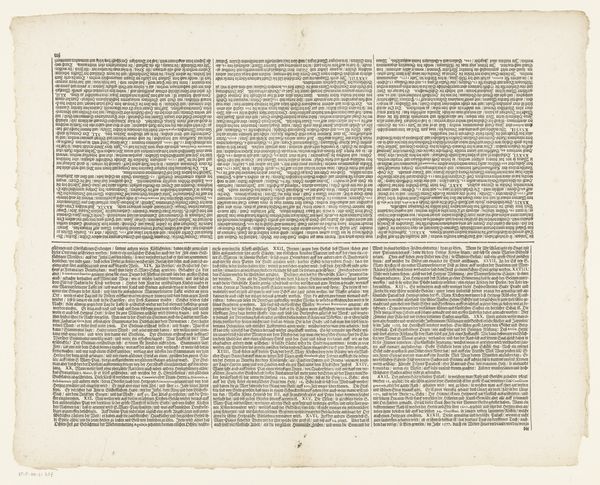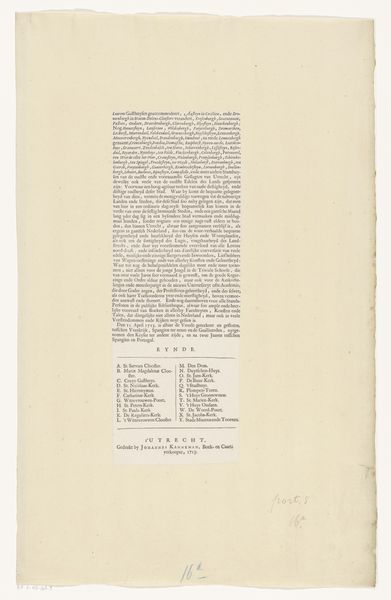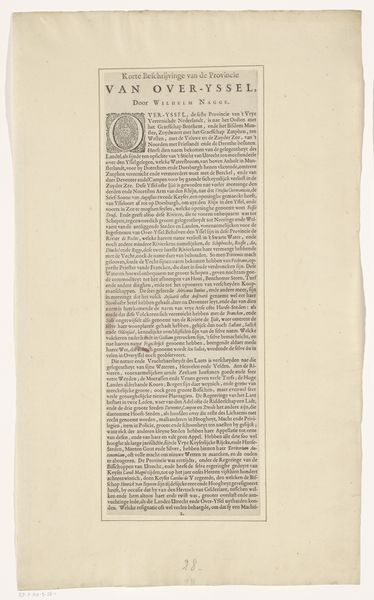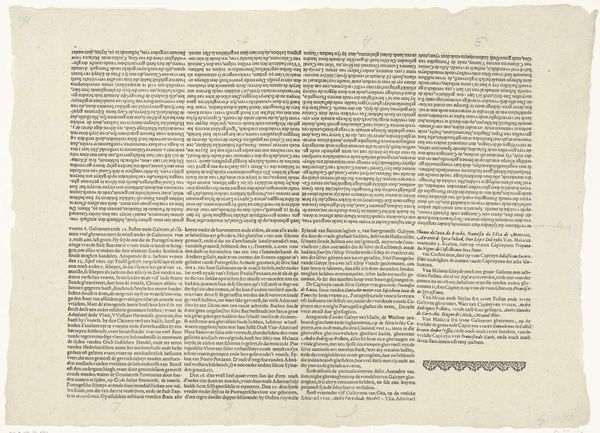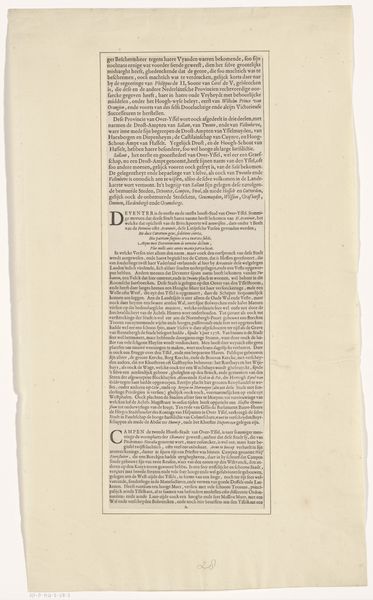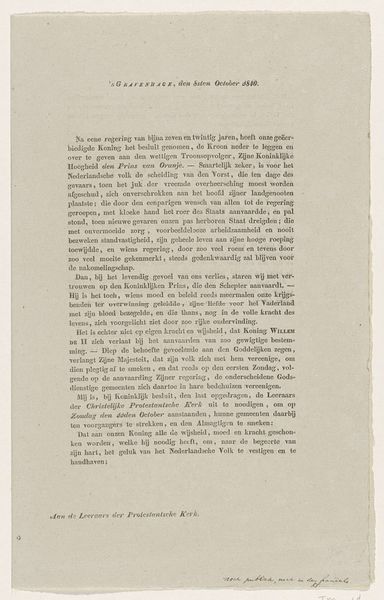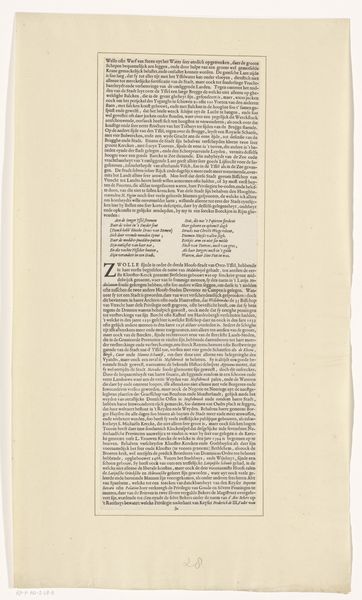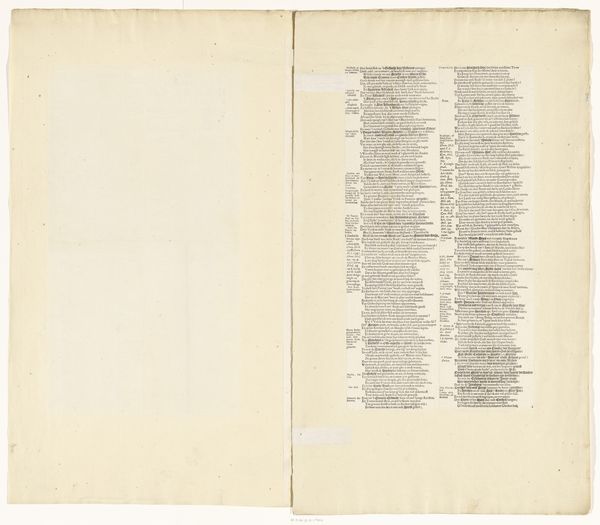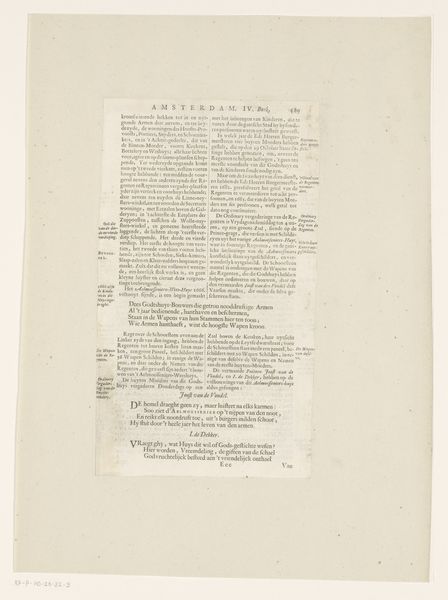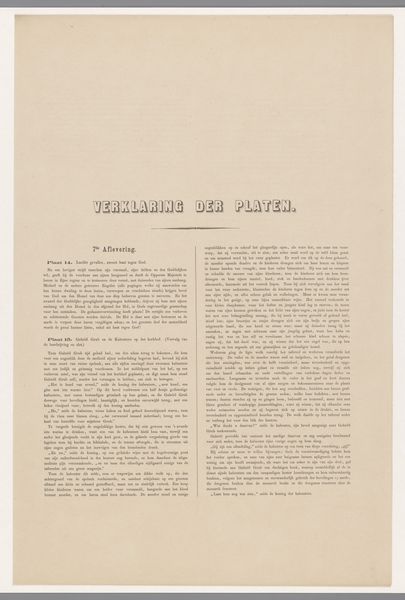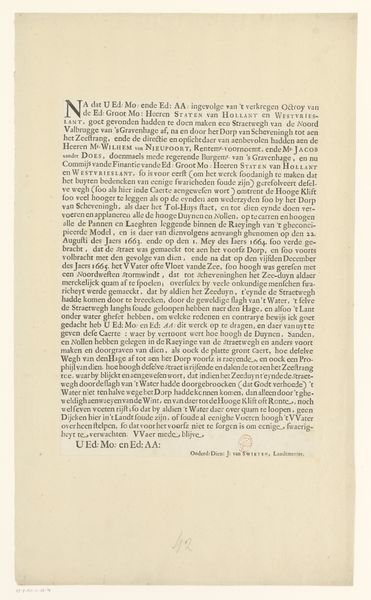
print, paper, typography
#
dutch-golden-age
#
ink paper printed
# print
#
old engraving style
#
paper
#
typography
Dimensions: height 340 mm, width 251 mm
Copyright: Rijks Museum: Open Domain
This is a printed page, ‘Part of a Description of the City of Utrecht’ by Johannes Kanneman. While undated, the text reflects a time of significant transformation in the Netherlands. Kanneman's description creates meaning through language, referencing local landmarks, religious institutions, and historical events. Utrecht, like much of the Netherlands, was undergoing significant religious and political upheaval during the early modern period. The Reformation had challenged the authority of the Catholic Church, leading to social, and sometimes violent, conflict. Descriptions of religious sites, like the mention of various churches and cloisters, reflect the complex relationship between religious institutions and the urban landscape. Kanneman's description is not merely a neutral account; it reflects the socio-political context of its time. To fully understand this description, we need to consult historical archives, maps, and other documentary sources. By examining the institutions, social structures, and political movements of the period, we can better appreciate the role of art, even in printed form, as a reflection of its time.
Comments
No comments
Be the first to comment and join the conversation on the ultimate creative platform.
